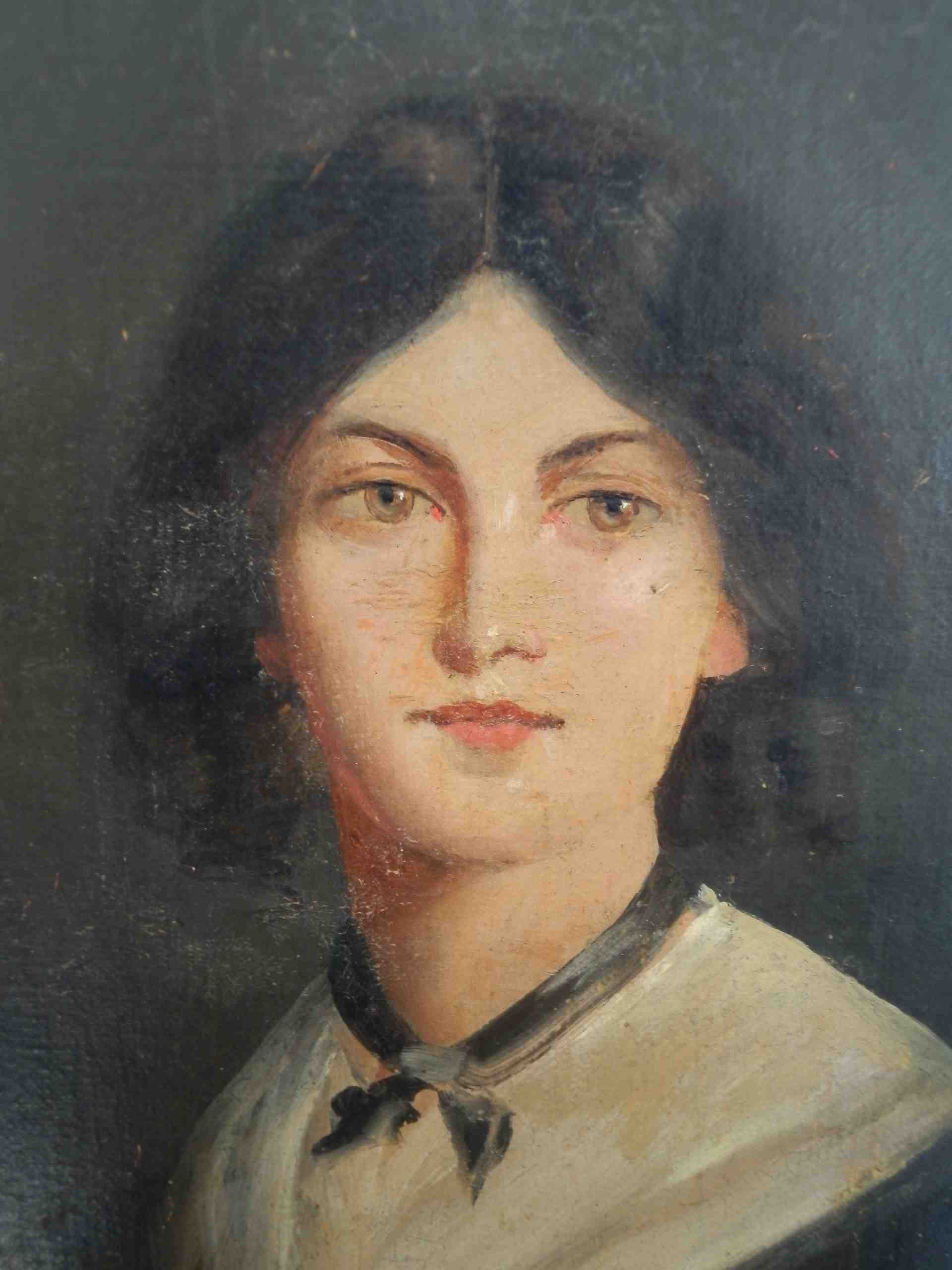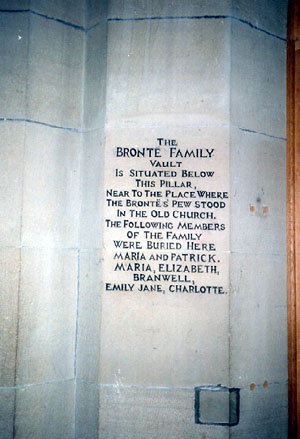Emily Brontë (Emily Jane Brontë)

Emily Brontë was born on 30 July 1818 in the village of Thornton, West Riding of Yorkshire, in Northern England, to Maria Branwell and an Irish father, Patrick Brontë. She was the younger sister of Charlotte Brontë and the fifth of six children, though the two oldest girls, Maria and Elizabeth, died in childhood. In 1820, shortly after the birth of Emily’s younger sister Anne, the family moved eight miles away to Haworth, where Patrick was employed as perpetual curate; here the children developed their literary talents. After the death of their mother in September 1821 from cancer, when Emily was three years old, the older sisters Maria, Elizabeth and Charlotte were sent to the Clergy Daughters’ School at Cowan Bridge, where they encountered abuse and privations later described by Charlotte in Jane Eyre. At the age of six on 25 November 1824, Emily joined her sisters at school for a brief period. When a typhoid epidemic swept the school, Maria and Elizabeth caught it. Maria, who may actually have had tuberculosis, was sent home, where she died. Emily was subsequently removed from the school, in June 1825, along with Charlotte and Elizabeth. Elizabeth died soon after their return home. The three remaining sisters and their brother Patrick Branwell were thereafter educated at home by their father and aunt Elizabeth Branwell, their mother’s sister. Their father, an Irish Anglican clergyman, was very strict and during the day he would work in his office while the children were to remain silent in a room together. Despite the lack of formal education, Emily and her siblings had access to a wide range of published material; favourites included Sir Walter Scott, Byron, Shelley, and Blackwood’s Magazine.
In their leisure time the children began to write fiction at home, inspired by a box of toy soldiers Branwell had received as a gift and created a number of fantasy worlds (including ‘Angria’) which featured in stories they wrote – all “very strange ones” according to Charlotte – and enacted about the imaginary adventures of their toy soldiers along with the Duke of Wellington and his sons, Charles and Arthur Wellesley. Little of Emily’s work from this period survives, except for poems spoken by characters. When Emily was 13, she and Anne withdrew from participation in the Angria story and began a new one about Gondal, a fictional island whose myths and legends were to preoccupy the two sisters throughout their lives. With the exception of Emily’s Gondal poems and Anne’s lists of Gondal’s characters and place-names, their writings on Gondal were not preserved. Some “diary papers” of Emily’s have survived in which she describes current events in Gondal, some of which were written, others enacted with Anne. One dates from 1841, when Emily was twenty-three: another from 1845, when she was twenty-seven. At seventeen, Emily attended the Roe Head Girls’ School, where Charlotte was a teacher but managed to stay only a few months before being overcome by extreme homesickness. She returned home and Anne took her place. At this time, the girls’ objective was to obtain sufficient education to open a small school of their own.
Emily became a teacher at Law Hill School in Halifax beginning in September 1838, when she was twenty. Her health broke under the stress of the 17-hour work day and she returned home in April 1839. Thereafter she became the stay-at-home daughter, doing most of the cooking, ironing, and cleaning and teaching Sunday school. She taught herself German out of books and also practised piano. In 1842, Emily accompanied Charlotte to the Héger Pensionnat in Brussels, Belgium, where they attended the girls’ academy run by Constantin Héger.
The two sisters were committed to their studies and by the end of the term had attained such competence in French that Madame Héger made a proposal for both to stay another half-year, even offering to dismiss the English master, according to Charlotte, so that she could take his place, while Emily was to teach music. However, the illness and death of their aunt meant that they returned to Haworth and though they did try to open a school at their home, they were unable to attract students to the remote area. In 1844, Emily began going through all the poems she had written, recopying them neatly into two notebooks. One was labelled “Gondal Poems”; the other was unlabelled. Scholars such as Fannie Ratchford and Derek Roper have attempted to piece together a Gondal storyline and chronology from these poems. In the autumn of 1845, Charlotte discovered the notebooks and insisted that the poems be published. Emily, furious at the invasion of her privacy, at first refused but relented when Anne brought out her own manuscripts and revealed she had been writing poems in secret as well.
In 1846, the sisters’ poems were published in one volume as Poems by Currer, Ellis, and Acton Bell. The Brontë sisters had adopted pseudonyms for publication, preserving their initials: Charlotte was “Currer Bell”, Emily was “Ellis Bell” and Anne was “Acton Bell”. Charlotte wrote in the ‘Biographical Notice of Ellis and Acton Bell’ that their “ambiguous choice” was “dictated by a sort of conscientious scruple at assuming Christian names positively masculine, while we did not like to declare ourselves women, because… we had a vague impression that authoresses are liable to be looked on with prejudice”. Charlotte contributed 20 poems, and Emily and Anne each contributed 21. Although the sisters were told several months after publication that only two copies had sold, they were not discouraged (of their two readers, one was impressed enough to request their autographs). The Athenaeum reviewer praised Ellis Bell’s work for its music and power, singling out his poems as the best: “Ellis possesses a fine, quaint spirit and an evident power of wing that may reach heights not here attempted”, and The Critic reviewer recognised “the presence of more genius than it was supposed this utilitarian age had devoted to the loftier exercises of the intellect.”
Emily Brontë’s Wuthering Heights was first published in London in 1847, appearing as the first two volumes of a three-volume set that included Anne Brontë’s Agnes Grey. The authors were printed as being Ellis and Acton Bell; Emily’s real name did not appear until 1850, when it was printed on the title page of an edited commercial edition. The novel’s innovative structure somewhat puzzled critics. Wuthering Heights’s violence and passion led the Victorian public and many early reviewers to think that it had been written by a man. According to Juliet Gardiner, “the vivid sexual passion and power of its language and imagery impressed, bewildered and appalled reviewers.” Even though it received mixed reviews when it first came out, and was often condemned for its portrayal of amoral passion, the book subsequently became an English literary classic. Although a letter from her publisher indicates that Emily had begun to write a second novel, the manuscript has never been found. Perhaps Emily, or a member of her family, eventually destroyed the manuscript, if it existed, when she was prevented by illness from completing it. It has also been suggested that, though less likely, the letter could have been intended for Anne Brontë, who was already writing The Tenant of Wildfell Hall, her second novel. In any case, no manuscript of a second novel by Emily has survived.
Emily believed that her health, like her sisters’, had been weakened by the harsh local climate and by unsanitary conditions at home, the source of water being contaminated by runoff from the church’s graveyard. She caught a severe cold during the funeral of her brother Branwell in September 1848 and was soon showing symptoms of tuberculosis. (It should be noted by the modern reader, though many of her contemporaries believed otherwise, “consumption”, or tuberculosis does not originate from “catching a cold”. Tuberculosis is a communicable disease through mucus and saliva and anyone living in a house with another member would be likely to contract it, or certainly risked exposure. It is also a disease that can remain asymptomatic, so it is even possible that all of the children could have contracted it at the same time.) Though her condition worsened steadily, she rejected medical help and all proffered remedies, saying that she would have “no poisoning doctor” near her. At noon, Emily was worse; she could only whisper in gasps. With her last audible words she said to Charlotte, “If you will send for a doctor, I will see him now” but it was too late. She died that same day at about two in the afternoon while sitting on the sofa at Haworth Parsonage. It was less than three months since Branwell’s death, which led a housemaid to declare that “Miss Emily died of a broken heart for love of her brother”. Emily had grown so thin that her coffin measured only 16 inches wide. The carpenter said he had never made a narrower one for an adult. She was interred in the Church of St Michael and All Angels family capsule, Haworth, West Yorkshire, England. Emily Brontë never knew the extent of fame she achieved with her one and only novel, Wuthering Heights, as she died a year after its publication, aged 30.
Born
- July, 30, 1818
- United Kingdom
- Thornton, West Riding of Yorkshire, England
Died
- December, 19, 1848
- United Kingdom
- Haworth, West Riding of Yorkshire, England
Cause of Death
- tuberculosis
Cemetery
- St Michael and All Angels Churchyard
- Haworth, West Yorkshire, England
- United Kingdom



